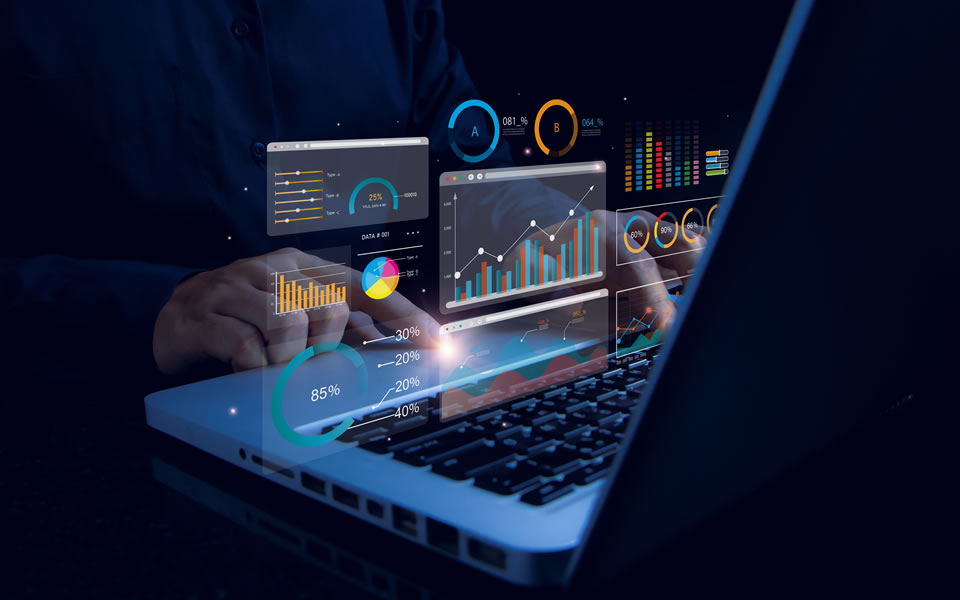Data Analytics: Definition, Uses, Examples, and More
Data Analytics: Definition, Uses, Examples, and More

Data analytics is the collection, transformation, and organization of data in order to draw conclusions, make predictions, and drive informed decision making.
Data analytics is often confused with data analysis. While these are related terms, they aren’t exactly the same. In fact, data analysis is a subcategory of data analytics that deals specifically with extracting meaning from data. Data analytics, as a whole, includes processes beyond analysis, including data science (using data to theorize and forecast) and data engineering (building data systems).
In this article, you'll learn more about what data analytics is, how its used, and its key concepts. You'll also explore data analytics skills, jobs, and cost-effective specializations that can help you get started today.
What is data analytics?
Data analytics is a multidisciplinary field that employs a wide range of analysis techniques, including math, statistics, and computer science, to draw insights from data sets. Data analytics is a broad term that includes everything from simply analyzing data to theorizing ways of collecting data and creating the frameworks needed to store it.
How is data analytics used? Data analytics examples
Data is everywhere, and people use data every day, whether they realize it or not. Daily tasks such as measuring coffee beans to make your morning cup, checking the weather report before deciding what to wear, or tracking your steps throughout the day with a fitness tracker can all be forms of analyzing and using data.
Data analytics is important across many industries, as many business leaders use data to make informed decisions. A sneaker manufacturer might look at sales data to determine which designs to continue and which to retire, or a health care administrator may look at inventory data to determine the medical supplies they should order. At Coursera, we may look at enrollment data to determine what kind of courses to add to our offerings.
Organizations that use data to drive business strategies often find that they are more confident, proactive, and financially savvy.
Learn more about how data is used in the real world in this lecture from Google's Data Analytics Professional Certificate:
Data analytics: Key concepts
There are four key types of data analytics: descriptive, diagnostic, predictive, and prescriptive. Together, these four types of data analytics can help an organization make data-driven decisions. At a glance, each of them tells us the following:
Descriptive analytics tell us what happened.
Diagnostic analytics tell us why something happened.
Predictive analytics tell us what will likely happen in the future.
Prescriptive analytics tell us how to act.
People who work with data analytics will typically explore each of these four areas using the data analysis process, which includes identifying the question, collecting raw data, cleaning data, analyzing data, and interpreting the results.
Data analytics skills
Data analytics requires a wide range of skills to be performed effectively. According to search and enrollment data among Coursera’s community of 87 million global learners, these are the top in-demand data science skills, as of December 2021:
Structured Query Language (SQL), a programming language commonly used for databases
Statistical programming languages, such as R and Python, commonly used to create advanced data analysis programs
Machine learning, a branch of artificial intelligence that involves using algorithms to spot data patterns
Probability and statistics, in order to better analyze and interpret data trends
Data management, or the practices around collecting, organizing and storing data
Data visualization, or the ability to use charts and graphs to tell a story with data
Econometrics, or the ability to use data trends to create mathematical models that forecast future trends based
While careers in data analytics require a certain amount of technical knowledge, approaching the above skills methodically—for example by learning a little bit each day or learning from your mistakes—can help lead to mastery, and it’s never too late to get started.
Data analytics jobs
Typically, data analytics professionals make higher-than-average salaries and are in high demand within the labor market. The US Bureau of Labor Statistics (BLS) projects that careers in data analytics fields will grow by 23 percent between 2022 and 2032—much faster than average—and are estimated to pay a higher-than-average annual income of $85,720 [1]. But, according to the Anaconda 2022 State of Data Science report, 63% of commercial organizations surveyed expressed concern over a talent shortage in the face of such rapid growth [2].
Entry-level careers in data analytics include roles such as:
Junior data analyst
Associate data analyst
Junior data scientist
You can practice statistical analysis, data management, and programming using SQL, Tableau, and Python in Meta's beginner-friendly Data Analyst Professional Certificate. Designed to prepare you for an entry-level role, this self-paced program can be completed in just 5 months.
As you gain more experience in the field, you may qualify for mid- to upper-level roles like:

Comments
Post a Comment